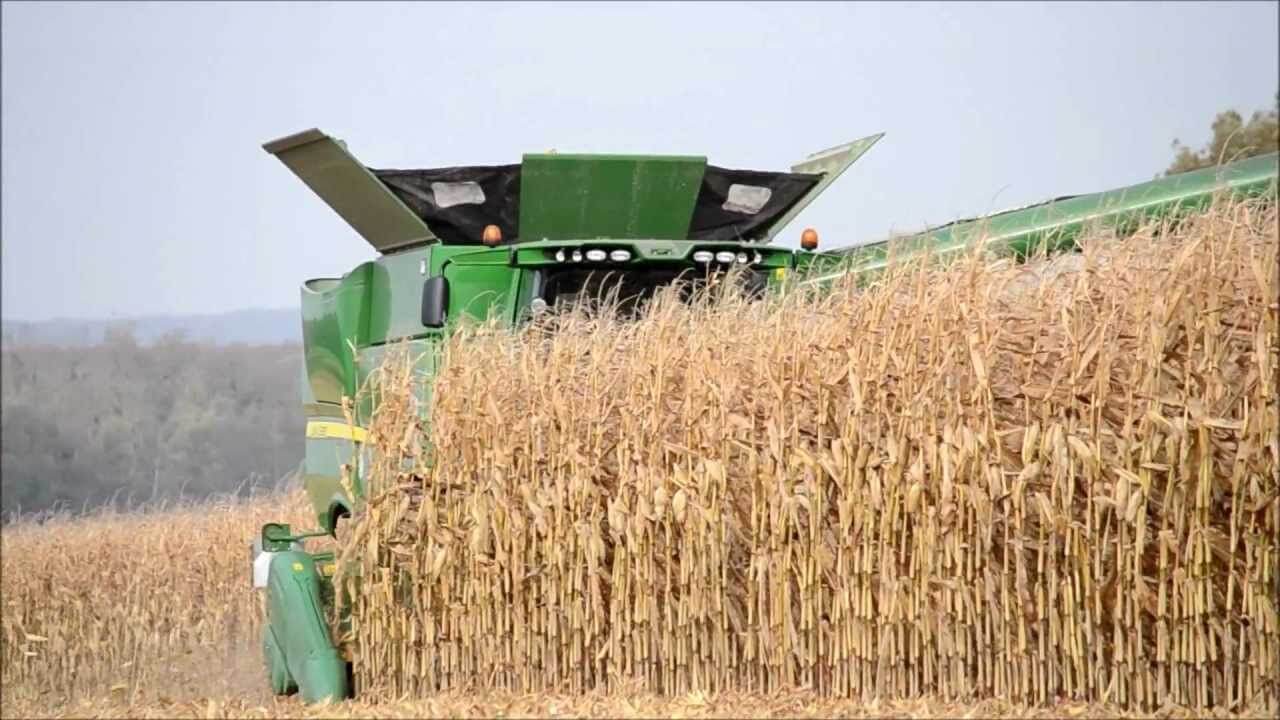A corn combine harvester is used to… you guessed it right, harvest corn. It also prepares it for storage. Previous corn-harvesting devices like the horse-drawn sled cutter detached the stalk from the ground itself. Binding the stalks for drying into shocks as well as shelling, subsequent picking, and husking, all the tasks were completed by hand.
The mechanical binder was invented in 1850. An elementary introductory picker was introduced around the same time too. However, the practical version came about 30 years later. A mechanical picker cuts the stalk from the ears, so only grains and cob get harvested.
Snouts or shields guide the stalks to pass through counter-rotating rollers that’ll tug all the stalks down and snap the ears very sharply. Finally, the tears are husked away using the husking mechanism. It consists of counter-rotating rollers that are closely spaced.
Pickers might be located behind the tractor or mounted on the tractor, one unit on every side. This will form a two-row harvester.
Combine Header
A corn combine harvester has removable heads that help to harvest corn easily. The standard header, also known as grain platform, is provided with a knife cutter bar and has metal teeth present with a revolving reel. This helps the cut crop fall into the auger after cutting.
There’s a variation of the platform too, known as the flex platform, that works similarly but has a cutter bar that’ll bend over ridges and contours. As corn is a cereal, so a rigid platform is used for this.
A grain platform can be utilized for corn, but ordinarily, a specialized corn head is used. The corn head has snap rolls that cut the stalk and leaf apart from the ear. This process makes sure that only the husk and the ear enter the throat.
Overall efficiency increases as less material enter the cylinders and pass through them. One can recognize the corn head by the existence of points in between each row.
Conventional Combine
A flight elevator and chain carry the cut crop through the feeder throat (commonly known as the “feeder house”). Then the crop is fed into the threshing area of the combine, which comprises a rotating threshing drum (commonly called a “cylinder”). Rasp bars or grooved steel bars are bolted here too.
These bars separate or thresh the chaff and grain through the straw. Smaller grains and chaff fall through the concave fitted against the meshed grills and steel bars. The straw is long, so it goes into the straw walker. As the grain is heavier than the straw, it falls instead of floating in the concave.
The drum speed can be easily adjusted on many machines. In addition, the distance between the concave and the drum is adjustable too. This helps to achieve optimum output and separation.
After the primary separation is done at the cylinder, the clean grain comes through the concave and then to the shoe. They contain a sieve and chaffer. The shoe is common in both rotary combines and conventional combines.
If you want to more and order it, you can simply visit Estes Performance Concaves.

